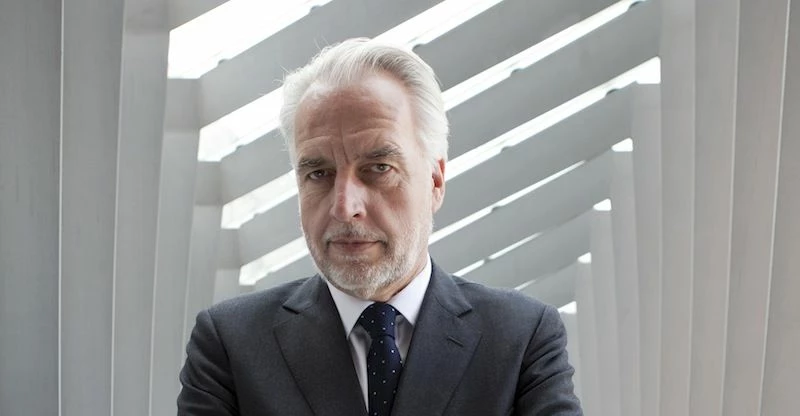
Partner Article
Bdaily meets V&A director, Martin Roth
Martin Roth has been director of London’s prestigious Victoria and Albert Museum since 2011 and has lead the institution from strength to strength. The 58-year-old German-born professor and former director of Dresden State Art Collections, is a widely published author and lecturer. Bdaily spoke to him to find out about the business of running a cultural institution and the realities of arts administration.
“There’s a misconception about what it takes to run a cultural institution in the year 2013,” says Martin in his debonair style. As director general of the Dresden State Art Collections he was responsible for 12 museums.
He adds: “Sometimes it felt more like keeping a dinosaur than running institutions. Quite often I would have TV crews shadowing me for programmes and so on. They would always be surprised and exhausted - expecting some kind of routine where I came in a 10am, sat in the library reading for a bit, wrote a few handwritten letters and then enjoyed a long lunch with colleagues and then going off to the golf course.
“What we’re doing is absolute business. When I was perhaps 15 or 16 in Stuttgart I did a day’s work experience where I attended a directors’ meeting. There was a money issue and the director of the museum got up and said - ‘oh that’s money and it’s not my domain,’” Martin laughs.
He explains that museum life is totally the opposite now. The running of a national institution with such an esteemed reputation is an enormous undertaking.
He adds: “We’re doing it to ensure a perfect strategy and concept to continue this great legacy. We need to keep the quality for our grandchildren but through a completely different management style.”
The interplay between maintaining a sustainable business and facilitating a rich cultural offering is an interesting one. Martin explains that the UK has largely got it right.
“This triangle situation where we’ve got that ‘arms length’ principle works very well. In the end it largely depends on people, but that balance of power between the Government, the institution and a board is good. It’s not like the US where you are completely controlled by the board. You start to take risks because the board is paying you a lot of money.
“Or, the opposite, such is the case in Germany, where everything is more or less controlled by the Secretary of State in a one-to-one relationship. The UK model is generally very supportive of its cultural institutions.
“Having said that, the model means all cultural institutions share their problems with others. This means budget cuts for instance. I think we could work in a more efficient style - and that means finding more innovative ways to create funds, as well as cost-saving within institutions.
“It means looking into contracts and assessing whether they are supportive of the staff and the institution. Could we have contracts that are more bespoke, more supportive of individual staff members’ lives - therefore driving efficiency.
“I think we can do much better. At the same we shouldn’t expect too much from marketing and catering and so on. What we do is the arts, culture and design - and this needs to be the focus.”
Martin’s view is all about preserving quality in the arts. He is insistent that institutions retain an element of risk, uncertainty and niche offering.
He explains: “Our David Bowie exhibition was the best attended exhibition in the history of the V&A. That’s great - but we can’t always do that. A lot of people are asking what’s next: Madonna, Elvis Presley? No it isn’t.
“We have to challenge ourselves and our public. I’m a strong believer in branding, but at the same time, if branding means you always do the expected, then the brand is not working in the end.
“But this is what people want. They want to come to a museum and have an unforeseen experience.”
Preserving quality also also means long-term thinking and consistency in legislation at national level. Martin refers to the Blythe House storage facility where many of the V&A exhibits are kept when not on display. He needs guarantees that the museum can continue to use this facility for a long period of time given that works are often off display for some years.
“I don’t expect any more money from the Government, but without guarantees like this, life will become very difficult,” says Martin.
Despite difficulties in budget cuts, Martin still maintains that we’re in a “golden age” for museums, and offers one piece of resounding advice - enjoy what we’ve got.
This was posted in Bdaily's Members' News section by Tom Keighley .
Enjoy the read? Get Bdaily delivered.
Sign up to receive our popular morning National email for free.








 A year of growth, collaboration and impact
A year of growth, collaboration and impact
 2000 reasons for North East business positivity
2000 reasons for North East business positivity
 How to make your growth strategy deliver in 2026
How to make your growth strategy deliver in 2026
 Powering a new wave of regional screen indies
Powering a new wave of regional screen indies
 A new year and a new outlook for property scene
A new year and a new outlook for property scene
 Zero per cent - but maximum brand exposure
Zero per cent - but maximum brand exposure
 We don’t talk about money stress enough
We don’t talk about money stress enough
 A year of resilience, growth and collaboration
A year of resilience, growth and collaboration
 Apprenticeships: Lower standards risk safety
Apprenticeships: Lower standards risk safety
 Keeping it reel: Creating video in an authenticity era
Keeping it reel: Creating video in an authenticity era
 Budget: Creating a more vibrant market economy
Budget: Creating a more vibrant market economy
 Celebrating excellence and community support
Celebrating excellence and community support